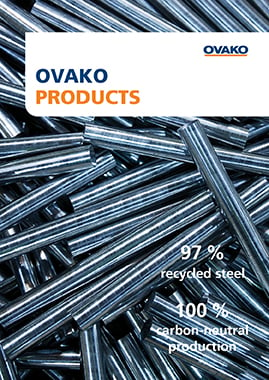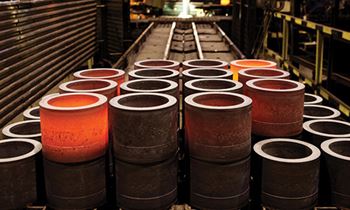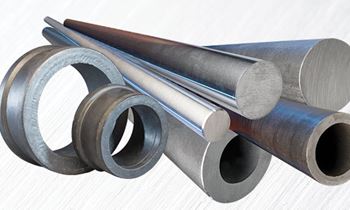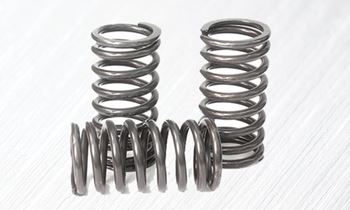Case hardening entails the treatment of a finished component in a carburizing atmosphere at a high temperature, typically 850–950°C, which increases the carbon content at the surface of the component. The carburized layer is typically 0,5–1,0 mm deep but can be deeper. Following carburization, the part is quenched and thereby hardened. During quenching the carburized layer is transformed to martensite with hardness determined by the carbon content. The result is thus a component with a hard surface and a comparably soft core. Typical components made out of carburizing steel, are gears in transmissions.
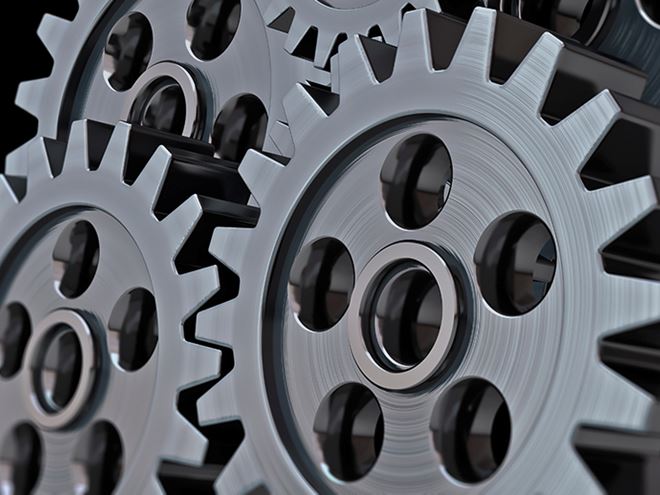
|
EN-standard |
Ovako |
Typical analysis |
||||||
|
C |
Si |
Mn |
Cr |
Mo |
Ni |
Other |
||
|
16MnCr5 |
0.16 |
0.2 |
1.2 |
1.0 |
|
|
|
|
|
20MnCr5 |
0.20 |
0.2 |
1.3 |
1.2 |
|
|
|
|
| 18CrMo8-5* |
0.18 |
0.3 |
0.8 |
1.8 |
0.5 |
|
|
|
|
20MoCr4 |
0.20 |
0.2 |
0.8 |
0.5 |
0.4 |
|
|
|
| 20NiCrMo2-2 |
0.20 |
0.3 |
0.9 |
0.6 |
0.2 |
0.5 |
|
|
| 16NiCrS4 |
0.16 |
0.1 |
1.0 |
1.1 |
|
0.8 |
|
|
|
20NiCrMo7 |
0.20 |
0.2 |
0.6 |
0.5 |
0.2 |
1.7 |
|
|
| 18CrNiMo7-6 |
0.18 |
0.2 |
0.7 |
1.7 |
0.3 |
1.6 |
|
|
| 12NiCr14-6* |
0.13 |
0.3 |
0.5 |
1.5 |
0.1 |
3.3 |
|
|
|
18NiCrMo14-6 |
0.18 |
0.3 |
0.5 |
1.4 |
0.2 |
3.3 |
|
|
|
22NiCrMo12-5* |
0.14 |
0.2 |
0.6 |
1.2 |
0.2 |
2.9 |
|
|
|
24NiCrMo15-5* |
0.24 |
0.3 |
0.7 |
1.2 |
0.3 |
3.6 |
|
|
|
20NiMo9-7* |
0.20 |
0.1 |
0.3 |
0.4 |
0.7 |
2.3 |
|
|
|
30MoCrV20-7* |
0.30 |
0.2 |
0.3 |
1.7 |
1.8 |
|
V |
|
|
16CrMnNiMo9-5-2* |
0.16 |
0.2 |
1.3 |
2.1 |
0.5 |
0.5 |
V |
|
EN-standard designation followed by “*” is not an official EN standard grade but named according to the rules in EN 10027.
We made it! But we are still not satisfied
What a journey! It took years of hard work to make our steelmaking operations more sustainable. In 2022, we went carbon neutral in all operations. But we´re still not satisfied - our journey continue for products with no CO2 emissions.
Read more about our path to carbon neutrality
